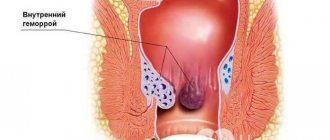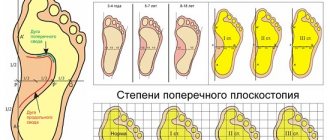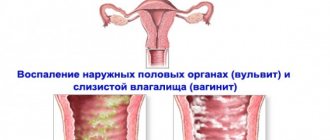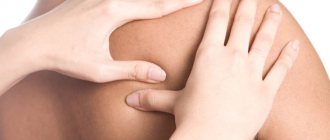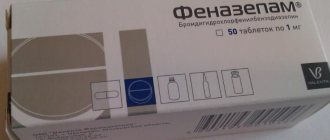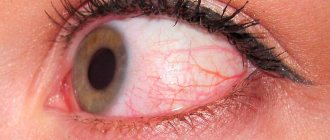Problems with ligaments can occur in people of all categories, and this is contrary to the fact that many still think that sprains can only occur during sports or heavy physical activity.
On the contrary, people who get injured in everyday life most often think about how to treat sprains.
Today we will figure out what to do if you sprain your ligaments.
How does a tendon ligament rupture?
To understand how to treat a sprain, you should take into account how the injury itself occurred and the condition of the patient. For example, if a sprain occurs because the joints, which were at that moment in a semi-flexed state, made a sharp twisting movement, such damage is a common injury for any basketball player or person who made any sudden rotational movement. This can happen as a result of a sudden lifting of a large load.
In order to know how to treat a sprain, the patient should be fully examined. He is prescribed an X-ray examination or an MRI (in more complex situations). Only after the doctor assesses the extent of the damage can treatment begin. If a sprain is left untreated, atrophy of the limb may develop. A serious injury to the knee leads to the fact that a person will not be able to straighten or, conversely, bend his leg, as a result of which he will remain disabled.
Important! To find out how to treat a sprained ligament in the leg, it is necessary to determine exactly where the tear occurred and how it affected the person’s overall motor function.
Only after this is it possible to prescribe an effective treatment regimen and restore all functions of the injured limb.
To understand how to treat a sprain, you should consider how the injury itself occurred.
Causes
The pathology most often occurs as a result of dislocation or awkward movement of the body, which causes the joint to “fall out” from its usual position. Subsequently, the ligament that supports it is torn or stretched. Often, a sprain occurs when a person falls or lands on an outstretched arm, or when the foot is firmly lowered onto the surface and slides.
Symptoms of tendon and muscle strains arise from severe tension. This problem can be of two types:
- Acute occurs during a period of damage or injury, impact, or due to lifting a heavy object;
- chronic appears due to strong repetitive muscle movements.
What are the main symptoms of injury?
The clinical picture depends on where exactly the rupture occurred and what degree of severity it has. In total, there are 3 main degrees of severity, namely:
- First degree: only part of the tendons is torn, while their mechanical integrity and continuity are preserved. Externally, it is difficult to determine the presence of swelling or swelling. The only thing that worries the patient is pain, but it is quite moderate. This type of sprain can be treated very quickly; 1-2 weeks are enough for a complete recovery. It is worth finding out from a specialist how to effectively treat a first-degree sprain.
- The next level is a little more difficult. In this case, most of the ligaments are torn, and it is also possible that the capsules themselves may be torn. Movements are very constrained and accompanied by severe pain. Treatment lasts from 3 to 6 weeks.
- The last degree is a complete rupture of the tendons. In this case, severe swelling occurs, subcutaneous bruising and instability in the functioning of the joint itself are possible. The pain is very pronounced, there is no resistance at all during the stress test. This type of sprain usually takes at least 6 weeks to heal. It is in this case that the possibility of independent healing is almost completely excluded, so the patient should definitely seek medical help.
Even with the most basic injury, it is better to consult a doctor who will determine the severity of the injury and tell you how to properly treat a sprain.
Treatment with folk remedies
It’s worth warning right away that this type of injury cannot be quickly cured using folk remedies alone. Alternative medicine recipes are effective and safe only in case of minor injuries - they mainly help relieve swelling and pain.
You can also use folk remedies during the recovery period to resolve hematomas and restore limb mobility. The following recipe is recommended:
Mix three tablespoons of medicinal clay, a spoonful of sugar, one grated potato tuber and half an onion. Apply as a compress several times a day until symptoms disappear.
How to treat an injury?
The answer to the question of how to treat a sprain depends on the severity of the injury. For example, if we are talking about a first degree sprain, then in this case treatment can be carried out at home. To do this, you should use a special orthopedic bandage, which is made for each type of joint separately. There are special bandages for the shoulder joint, as well as for the elbow and knee ankle separately. It is the caliper that supports the torn ligament and thereby allows it to recover properly. Sometimes, instead of such a bandage, a regular elastic bandage is used. He can only help with minor injuries. Its main function is to help reduce swelling and also reduce the mobility of the joint itself. You should be especially careful: if the bandage is tightened too much, it can cause a violation of the venous outflow. Doctors recommend removing the bandage immediately before going to bed. If the injury is very severe, it is better to use a special splint. How to treat a sprained ankle? You should wear special shoes here.
First aid for sprains
Second degree stretch
Of course, if the injuries are more complex, then treatment should be taken much more seriously. A grade 2 knee sprain requires a more serious approach. To understand how to treat this injury, you should understand that in this case the movement of the leg will be completely blocked. All possible loads and mobility should be limited. Immediately after the injury, during the first 2-3 days, the joint and all surrounding muscles should be kept completely at rest and motionless.
It is important to apply cold to the injury site in the first minutes after injury. To do this, you can use regular ice wrapped in a towel. Cold perfectly suppresses swelling and also reduces pain. In this case, ice can be applied every 2-3 hours on the first day after injury.
Important! You should not use ice without a towel, otherwise, in addition to stretching, you can also get frostbite to the tissues.
It is important to apply cold to the injury site in the first minutes after injury.
It is best to hold the injured joint higher. This is especially true when it comes to how to treat a sprained ankle. Regular pillows will help with this, as well as other objects on which you can rest your foot. This recommendation will help not only reduce leg swelling, but also reduce pain.
To find out how to treat a knee sprain, you need to first examine your leg. In addition to the procedures described, you can use special warming ointments and creams. But they have different properties, so you should consult your doctor before use.
Symptoms
The degree of ankle ligament injury varies in severity:
- Minor (mild). The ligaments are injured, but not torn.
- Partial (incomplete). Accompanied by local subcutaneous hemorrhage and mild swelling. The bluish and black spots caused by injury hurt when pressure is applied to them. Severe pain also occurs while walking.
- Spicy. The injured area swells, a severe hematoma forms, often indicating separation and rupture of the ligaments. The person is unable to move normally, and the joint becomes unstable.
Self-medicating a sprain is strongly discouraged. Otherwise, there is a high probability of inadequate recovery, leading to chronic instability of the lateral ankle ligaments and regular injury. It occurs both during physical activity and walking over rough terrain, and during ordinary leisurely and measured walking.
Given the seriousness of the injury, poor or insufficient treatment can cause complications, including quite serious ones. Comprehensive and correct therapy implies mandatory contact with a specialist.
Only a qualified surgeon can determine the degree of injury to the ankle, who will perform all the required manipulations to restore normal functioning of the joint. Following your doctor's recommendations allows you to minimize the consequences of a sprain.
Acute and excessive injury requires a mandatory visit to a surgeon, and the lung usually goes away on its own. However, if within two weeks the symptoms of a sprain make themselves felt, it is almost impossible to step on the leg, and the help of a specialist is immediately required.
You should act immediately, especially in cases where swelling spreads to the bones of the ankle or a significant deformation of this joint is noticeable, which is accompanied by unbearable pain. The presence of these symptoms does not require waiting 14 days, but indicates the need to consult a doctor.
Symptoms of a sprain immediately after an injury may subside and become fully apparent within a few hours, depending on the extent of the injury.
- pain,
- edema,
- bleeding (hematoma),
- limitation of joint mobility,
- visual change in ankle position.
(if the table is not completely visible, scroll to the right)
Frequent ankle injuries and constant stress on the joint (for example, during sports) can lead to chronic sprains. This condition is characterized by:
- periodic pain in the joint of varying intensity;
- joint weakness, rapid fatigue;
- change in skin color in the damaged area (from reddish to blue-purple);
- frequent swelling.
- incomplete rehabilitation after treatment;
- undiagnosed previous injury;
- congenital developmental anomalies;
- neoplasms (cyst, osteoma).
To accurately determine the cause of chronic pain, X-rays and tomography are additionally prescribed.
Ankle sprains vary in severity:
- Mild or minor injury without ligament rupture.
- Incomplete, partial rupture of ligaments, moderate sprain, but accompanied by swelling and local subcutaneous hemorrhages. Blue or black spots appear, pressure on which causes pain. Also, acute pain occurs when walking.
- Swelling of the injured area with the formation of a significant hematoma, which most often indicates a complete rupture or even separation of the ligaments. The injury is accompanied by the patient’s inability to move normally, as well as instability of the joint.
It is also recommended to avoid self-medicating acute sprains, as this may result in incomplete recovery from the injury. Because of this, chronic instability of the lateral ligaments of the ankle joint develops, which subsequently leads to permanent injury.
Because of this, chronic instability of the lateral ligaments of the ankle joint develops, which subsequently leads to permanent injury not only during exercise and walking over rough terrain, but even during ordinary quiet walking.
To prevent any complications, proper treatment of sprains is necessary, which can only be provided by a surgeon or traumatologist. The specialist will competently determine the degree of injury and take all necessary measures to quickly restore the functioning of the joint.
The consequences of sprains become easier if you follow the instructions of a professional correctly.
However, with a mild injury, you don’t need to see a doctor - recovery will take place on its own. Help will definitely be needed if sprain symptoms have not disappeared within 14 days after the injury and the patient has difficulty stepping on his leg.
Moreover, if the swelling extends to the area of the bones of the ankle joint or there is a noticeable deformation of this joint, usually causing unbearable pain.
A sprain occurs at once, which means it cannot be cured, like an infection, for example. Rehabilitation after such an injury is, in fact, treatment. Most people, even without basic knowledge of medicine, know what methods can be used to help restore a joint.
- Peace. You need to put minimal stress on your leg, try to walk less in general. Any stress after spraining usually only leads to complications. Pain is an important factor. Remember: pain is a special mechanism that warns us about damage to the body, so we should not endure it and demonstrate unnecessary courage or willpower.
Neglecting pain only makes the injury worse. Gently place your foot on the ottoman when sitting in an armchair or on a chair, and before going to bed, place it on a stand or pillow - the blood will drain from the damaged ankle joint and the pain will decrease.
- Cold. It is best to cool the injured leg with a special freezing spray. But many sports fans simply don’t have it (although it would be worth carrying it with them), so it is customary to apply ice, which must be wrapped in cloth. Ice is applied for no more than 15 minutes, and re-cooling can be done after another hour.
Cold slows down the movement of blood, thus reducing the size of swelling and dulling pain. Strong stretching can be cooled for 24 hours (at the indicated intervals), then you need, on the contrary, to act with heat - a hot bath and a heating pad. After preventing large swelling from forming, the heat will soothe the joint and speed up the flow of blood, which carries oxygen and restorative substances.
- Joint stabilization. An elastic figure eight bandage is tightly placed on the ankle joint to secure the correct position of the bones and make it difficult for swelling to form.
- Raising a sprained joint above the level of the heart. In the hospital, the leg is suspended on a special structure, but at home, any available means are used for this (pillows, sofa covers, chairs).
- Warm up the joint. Physical therapy occurs through light exercises: rotation, flexion and extension. Depending on the degree of injury, they are practiced from 2-4 days after the sprain, but only if there is no pain.
A rehabilitation doctor will draw up an exercise program so that recovery is not slowed down due to stress, but is accelerated. This is how a gradual mastery of all available movements of the joint occurs.
- Medicines. Anti-inflammatory drugs such as ibuprofen are used to prevent inflammation and reduce pain. For grade three sprains, prescription painkillers are prescribed. It is possible that for the reconstruction of ligaments it will be necessary to take special nutritional supplements that help the connective tissue of the joints to heal.
A severe ankle sprain (grades 2 or 3) requires complete absence of any weight-bearing activity, which can make getting to the rehabilitation site difficult, especially if you are used to working out alone. Tell anyone who can help, just to stay on your toes.
If you have cold objects or liquid with you, try to cool your foot at least a little. In general, for such situations you need to have with you both an elastic bandage and a freezing spray. After providing first aid, do not touch the joint and place your foot on an elevated platform while awaiting help.
As soon as the swelling disappears, begin rehabilitation exercises. Again, don't get carried away and don't tolerate the pain - submit to it and leave your leg alone. According to surgeons and traumatologists, it is best to start warming up as early as possible, but gradually increase the load on the ligaments.
The fact is that during healing, the ligament may fuse in one position. Because of this, the mobility of the joint is impaired, and there are frequent cases of atrophy of muscles that have not experienced stress for a long time. This often happens with fractures, since their rehabilitation takes much more time.
Medicinal ointments with anesthetics, analgesics and anti-inflammatory drugs are very useful in recovery.
In any case, after a sprain, the ankle joint requires thorough care and caring attitude.
Partial rupture of the ankle ligaments is often not accompanied by significant symptoms. The victim experiences mild pain and slight lameness, which may disappear within 2-3 days. With grades 2 and 3 of the severity of the pathology, its symptoms will be more pronounced. If the integrity of the ligaments is severely damaged, the victim experiences intense burning pain when trying to step on the foot. When attempting to walk or run, the risk of twisting your foot increases. The pain syndrome does not disappear completely when the leg is relaxed and immobilized.
How to recover and what should you be afraid of?
Only a specialist can tell you how to treat a specific sprain. After gradual recovery begins, doctors recommend starting to increase the load on the body, which should be gradual and not cause too much pain. If you keep a joint motionless for too long, it can completely atrophy.
Many doctors do not recommend leaving the joint without movement for a long time.
How to treat a sprained shoulder joint or any other, and what exactly should you be wary of? For similar injuries:
- do not go to the bathhouse or sauna, avoid too high temperatures;
- exclude alcohol from the diet;
- for the first 72 hours, avoid any stress on the joint;
- Do not massage, it will increase swelling.
Many doctors do not recommend leaving the joint without movement for a long time. If we are talking about a first degree sprain, then rehabilitation should begin within 48 hours after the injury. If we are talking about the second degree of severity, then about 3-4 days after the injury you need to begin rehabilitation measures. When very severe pain is felt when moving, it is better to wait and keep the damaged joint at rest.
Opioid analgesics are much more effective in relieving pain
Rehabilitation after a sprain
Rehabilitation measures begin to be carried out from the first days after injury in order to prevent the development of physical inactivity, as well as to quickly restore lost functions.
They use physical therapy (physical therapy), massage, and occupational therapy.
The objectives of exercise therapy are:
- increasing the victim’s vitality;
- improving the function of the cardiovascular and respiratory systems;
- prevention of complications;
- adaptation of all body systems to physical activity;
- increased blood and lymph circulation in the damaged area to simulate recovery processes;
- prevention of muscle wasting and joint stiffness.
Among the means of exercise therapy, preference is given to therapeutic gymnastics. It includes:
- breathing exercises (static, dynamic);
- exercises to strengthen the muscle corset (bends, turns, half-turns);
- exercises for a healthy limb (active movements in all joints, isometric exercises).
For the injured limb, static exercises (holding the limb), isometric exercises, abduction and adduction, as well as active movements in healthy joints are used, which helps to activate blood circulation and recovery processes.
The load is prescribed depending on the stage of rehabilitation - from easy to more complex. An increase in load occurs by increasing the number of exercises, their dosage and the number of repetitions. Coordination and balance exercises are gradually added.
During the recovery period, problems may arise such as limited range of motion in the joint, as well as a decrease in the level of endurance. Based on this, the main task of the recovery period is to restore the patient’s impaired function and performance.
Massage is prescribed on the second day after the sprain. It must be done very carefully so as not to cause pain to the victim, because otherwise it can cause a deterioration in the condition of the injured area.
At the beginning of the course, massage is done only above the affected area. Suction massage (to relieve swelling) is done 1-2 times a day for an average of 10 minutes. With a gradual transition to the injured area, the duration of the massage session increases to 15 minutes.
Occupational therapy is widely used to return a person to their work responsibilities. To do this, use exercises that are as close as possible to the professional activities of the person being rehabilitated.
The criterion for returning to work is a good range of motion in the injured joint, as well as the quality of performing everyday tasks (self-care).
With the right treatment and course of rehabilitation measures, the prognosis for any degree of sprain is favorable.
Ed. traumatologist-orthopedist Savchenko V.R.
What should you remember when carrying out treatment?
The list of medications that doctors recommend to treat sprained foot ligaments can be adjusted individually.
It all depends on the complexity of the injury, as well as the tolerability of a particular drug. Let's say, if we are talking about a minor injury, then we can use non-steroidal medications that can relieve inflammation. But they cannot be used for more than one week, otherwise you can get a stomach or duodenal ulcer.
Most often, doctors recommend resorting to a combination treatment method. The use of opioid analgesics may be recommended. They relieve pain much more effectively. They are best used in difficult situations.
When spraining ligaments of varying severity, first of all you should try to reduce the pain shock
Before you become interested in how to treat a sprain of the knee or any other joint, you should first consult with your doctor, and only then resort to the use of any medications. The same applies to other treatment methods. How serious the injury is can only be determined after a thorough examination. The treatment regimen should include several treatment methods.
When spraining ligaments of varying severity, you should first try to reduce the pain shock, relieve swelling and protect the joint from all movements.
Recovery period
The rehabilitation course of treatment allows you to quickly restore functionality to the ligaments and mobility to the patient, regardless of whether surgical or conservative treatment was performed. Three methods are used:
- Physiotherapy;
- Massage;
- Physiotherapeutic procedures.
P
They should be used from the first days of treatment, gradually increasing the intensity and load. A sign that the load is too high at this stage is pain. If they occur during exercise, the rehabilitation program needs to be adjusted.
Gymnastics, massage, and various warm-ups can be performed at home if for some reason it is inconvenient for the patient to visit a clinic or day hospital. But medical supervision is still necessary.
In the case of serious injuries - for example, complete rupture of ligaments in professional athletes - it makes sense to undergo a rehabilitation course of treatment in a specialized medical institution.
